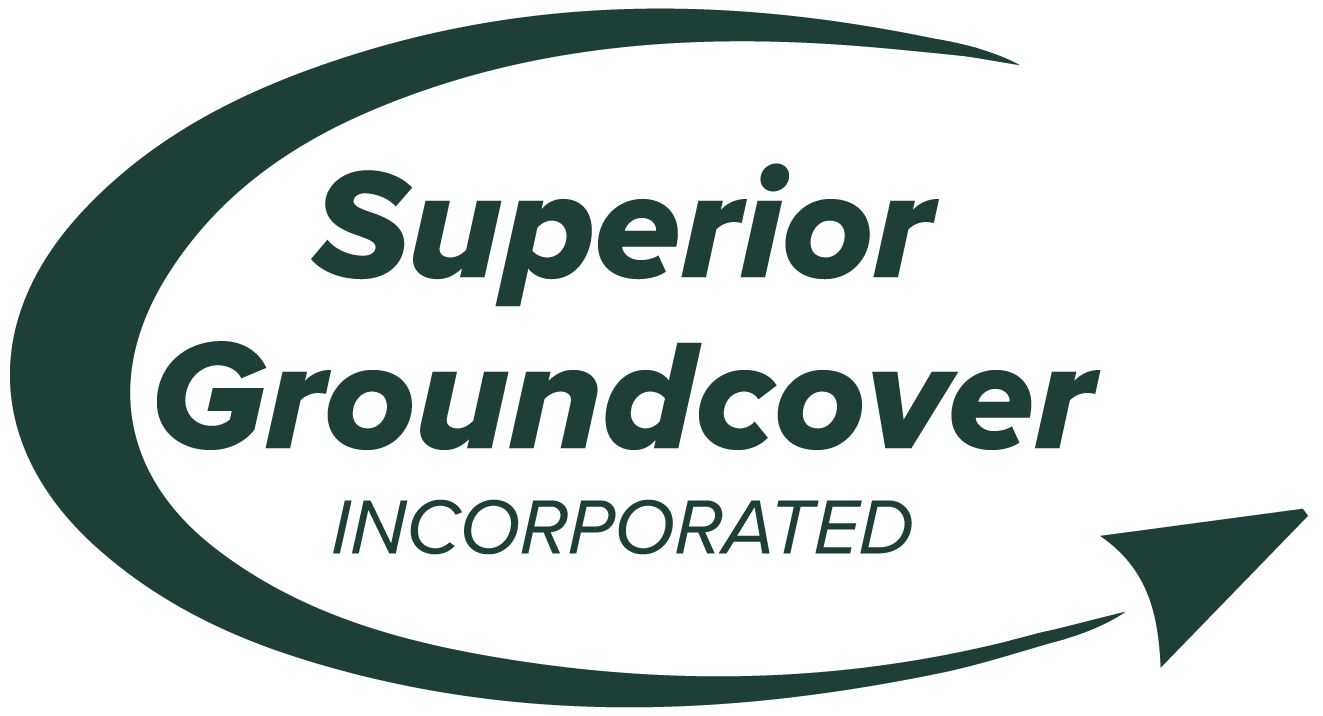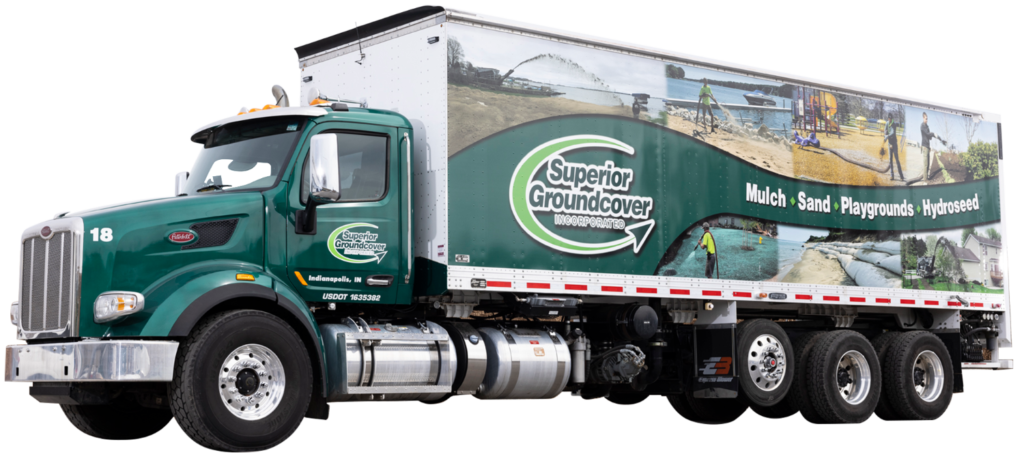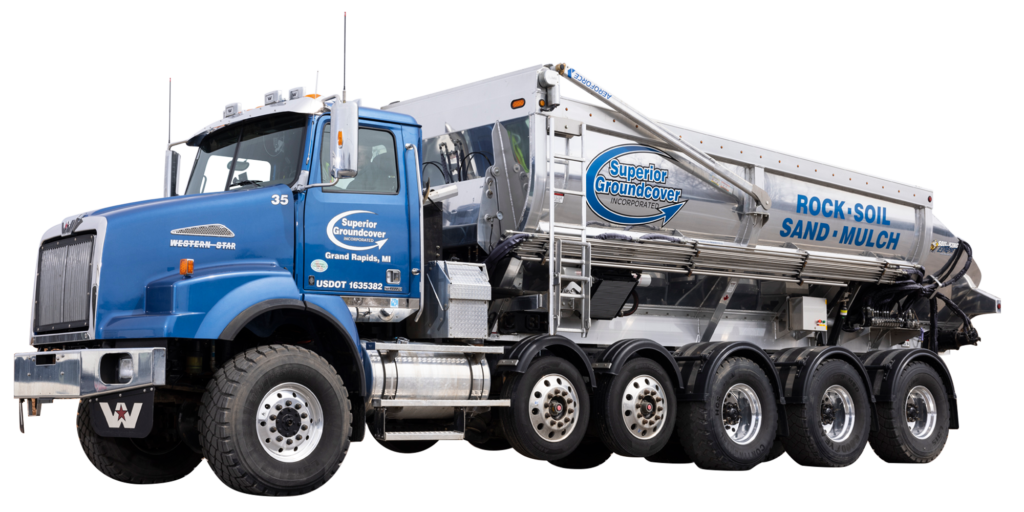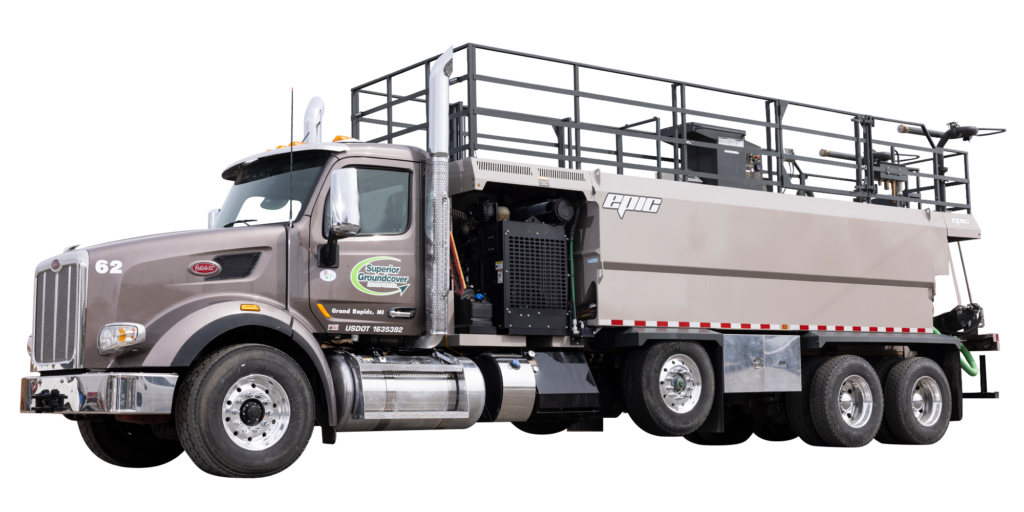Whether you’re working on a residential lawn or a large-scale commercial plot, choosing the right material to prevent erosion is essential to keep your landscaping looking its best for years to come. This comprehensive guide explores the 3 best materials for erosion control and how to determine which one is the best fit for your project.
What is Erosion Control?
Erosion control measures prevent soil loss from natural elements like wind and water. Putting the right erosion control solutions in place is an important part of maintaining the integrity of your carefully designed landscapes.
The right erosion control product can also enhance soil health, improve vegetation establishment and seed germination, as well as improve the overall landscape sustainability.
There is no one best way to prevent soil erosion effectively. Each site will have different needs, leading to different erosion control solutions. You’ll need to consider the soil type, slope, water runoff and exposure to other erosive forces to determine which erosion control products your project needs.
Although Superior Groundcover offers a wide range of erosion control materials, these are the three erosion control materials we recommend most often.
Erosion Prevention Option #1: Hydroseed
What is Hydroseeding?
Hydroseeding is a planting process that uses a slurry of seed, mulch, and fertilizer. This mixture is sprayed onto the soil using specialized tank trucks and long application hoses. Hydroseeding is a quick, cost effective solution for even coverage.
Benefits of Hydroseeding
Hydroseeding works for various terrains, including steep slopes and areas that are difficult to access. With the long application hoses, we are able to apply the slurry into hard to reach places without damaging the property.
Hydroseeding is much more cost-effective than traditional sod installation. Since our hydroseed slurry can be customized for different soils, hydroseeded lawns develop deeper root systems, providing stronger erosion prevention.
Hydroseeding is also less labor-intensive (especially when you partner with Superior Groundcover for the application). This translates to significant time and cost savings for both landscapers and their clients.
Applications of Hydroseeding
Hydroseeding is ideal for residential lawns, commercial properties, and public spaces like parks and sports fields. It’s also effective for erosion-prone areas like slopes and banks. Hydroseeding offers a versatile and efficient solution for establishing growth and vegetation quickly.
Erosion Prevention Option #2: HydroMulch
What is HydroMulch?
HydroMulch, also known as hydraulic mulch, is similar to hydroseed, just without the seeds. Typically HydroMulch is applied over soil areas that have been seeded with a broadcast or brillion seeder. Its primary function is to stabilize the soil, creating a protective layer that prevents surface erosion and helps retain moisture.
HydroMulch includes a slurry of mulch fibers, water, and a tackifier (a sticky substance that helps the mulch adhere to the soil). We apply HydroMulch the same way we’d apply hydroseed—using one of our specialized tank trucks.
Benefits of HydroMulch
HydroMulch slows the erosion process by forming a protective barrier over the soil. This barrier reduces the impact of rain and wind, preventing soil displacement and erosion. The mulch fibers also help maintain soil hydration and promote healthier plant growth.
HydroMulch is much easier to apply than erosion control blankets, making it safer and more cost effective for you and your crew. Because mulch is biodegradable, it is also a better option for the environment than erosion blankets.
Applications of HydroMulch
HydroMulch is commonly used in revegetation projects, agricultural fields, highway slopes, and even areas affected by wildfire.
For landscapers, HydroMulch can provide an effective solution for stabilizing soil and promoting vegetation growth.
Erosion Prevention Option #3: Compost Blankets
What is a Compost Blanket?
A compost blanket is a roughly 2 inch layer of compost applied to the soil surface using a blower truck. The compost is rich in organic matter and nutrients, providing soil stabilization and a better environment for plant growth.
Compost Blankets vs Erosion Control Blankets
Compost blankets are a thick layer of compost that blankets the existing soil. Erosion blankets are made of natural or synthetic fibers. They look a lot like carpet rolls for the ground. To be effective, erosion blankets need to be perfectly lined, which can be challenging on rough terrain and slopes.
Compost blankets start enriching the existing soil as soon as it is placed while erosion blankets serve to provide a structure on top of the topsoil. Even erosion blankets made from natural fibers will take months, if not years, to break down.
Benefits of Compost Blankets
One of the key benefits of compost blankets is their ability to improve soil health. If you are working at a site with poor soil quality, a compost blanket is a great way to get things growing again.
Compost blankets provide effective erosion control by creating a protective layer over the existing soil, absorbing rainwater, reducing runoff and helping prevent soil displacement in the short-term. In the long run, it provides an ideal environment for vegetation growth, restoring the land to a healthier state.
Applications of Compost Blankets
Compost blankets are ideal for areas with poor soil quality or where the soil has been damaged. Compost blankets can be used in construction sites and agricultural fields.
For landscapers, compost blankets offer a sustainable and eco-friendly first step for erosion control. They can be used in combination with other erosion control methods to enhance soil health and promote vegetation growth.
3 Best Practices for Erosion Control
Selecting the best material for erosion control depends on various factors, including the project’s scope, any budget constraints, and the environmental conditions. The most effective erosion control happens in three steps:
Step 1: Conduct a Site Assessment
Before selecting erosion control materials, you’ll want to do a thorough site assessment. Identify areas with high erosion risks, such as steep slopes and other environmental conditions. Then, you’ll want to conduct a soil test to determine if the soil needs enhancement for healthy plants to grow. This initial information will help you choose the best erosion control material for your project.
Step 2: Proper Installation
Even the best erosion control materials will wash away if they aren’t applied properly. If you partner with Superior Groundcover for your erosion control materials and application, we can apply all three of the erosion control products mentioned using our advanced blower trucks. Our expert team will place the erosion control materials quickly and neatly so that your crew can focus on other aspects of the project.
Step 3: Monitoring and Maintenance
After the initial erosion control products have been placed, you will want to regularly monitor your erosion control measures so that you can address any issues before further erosion occurs.
Superior Groundcover: Your Partners in Erosion Control
Erosion control is a vital piece of protecting your clients’ homes, businesses, and landscaping. Whether you need to provide structural support through retaining walls or are just trying to reduce erosion to keep your landscaping looking its best, Superior Groundcover is your trusted partner for erosion control.
We can apply a variety of erosion control products, like Hydroseed, HydroMulch, and compost blankets, using our specialized trucks.
If the detrimental effects of erosion have already taken its toll, we also offer geotextile fabric and tubes, sandbag installation and SOX Erosion Solutions products.
When you partner with Superior, we help you choose the best erosion control material for your project and then install it so quickly and efficiently you’ll feel like you’ve finally found a way to stop erosion in its tracks.
Stop letting erosion ruin your landscaping. Request an erosion control estimate from Superior Groundcover today.




